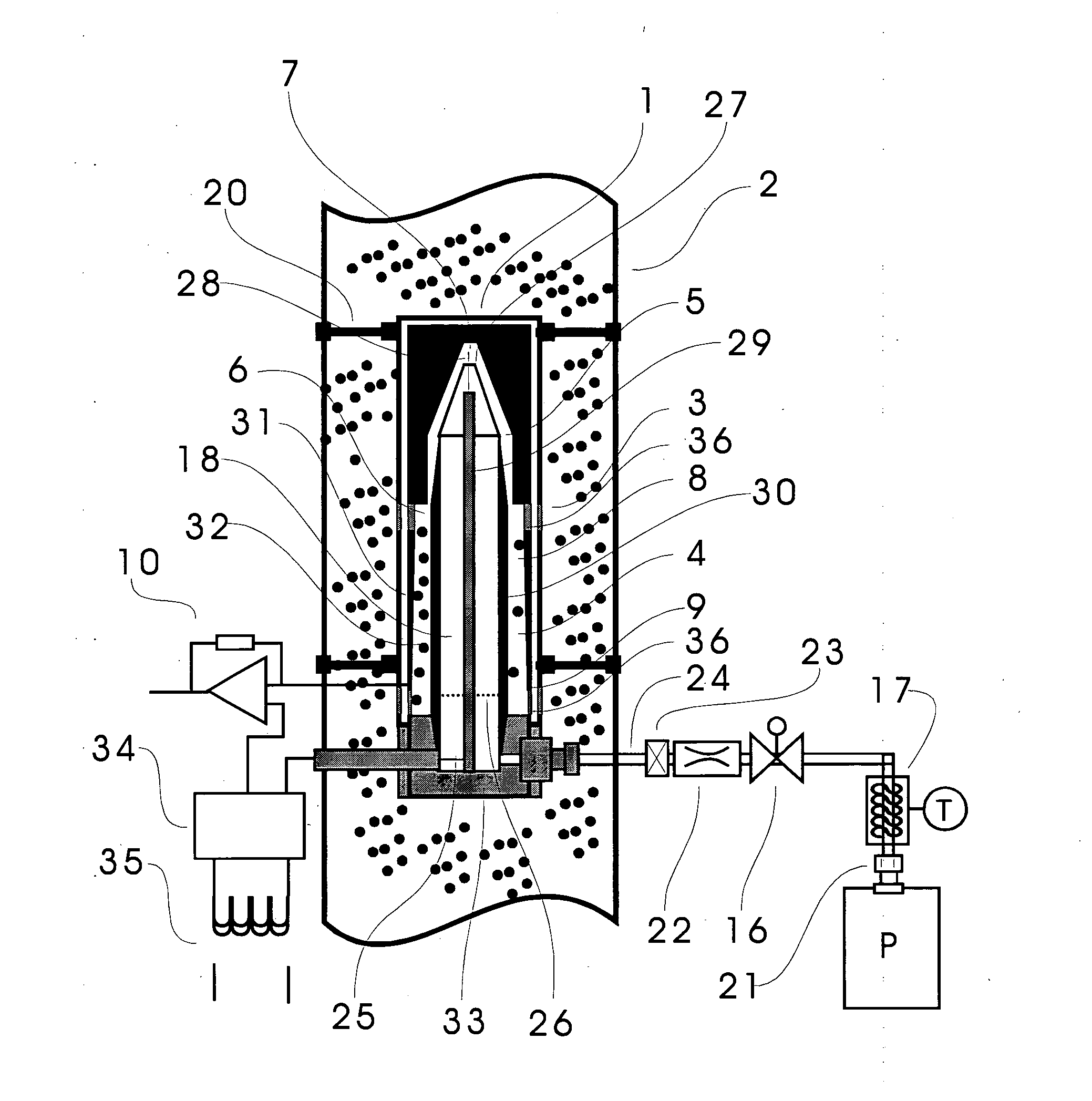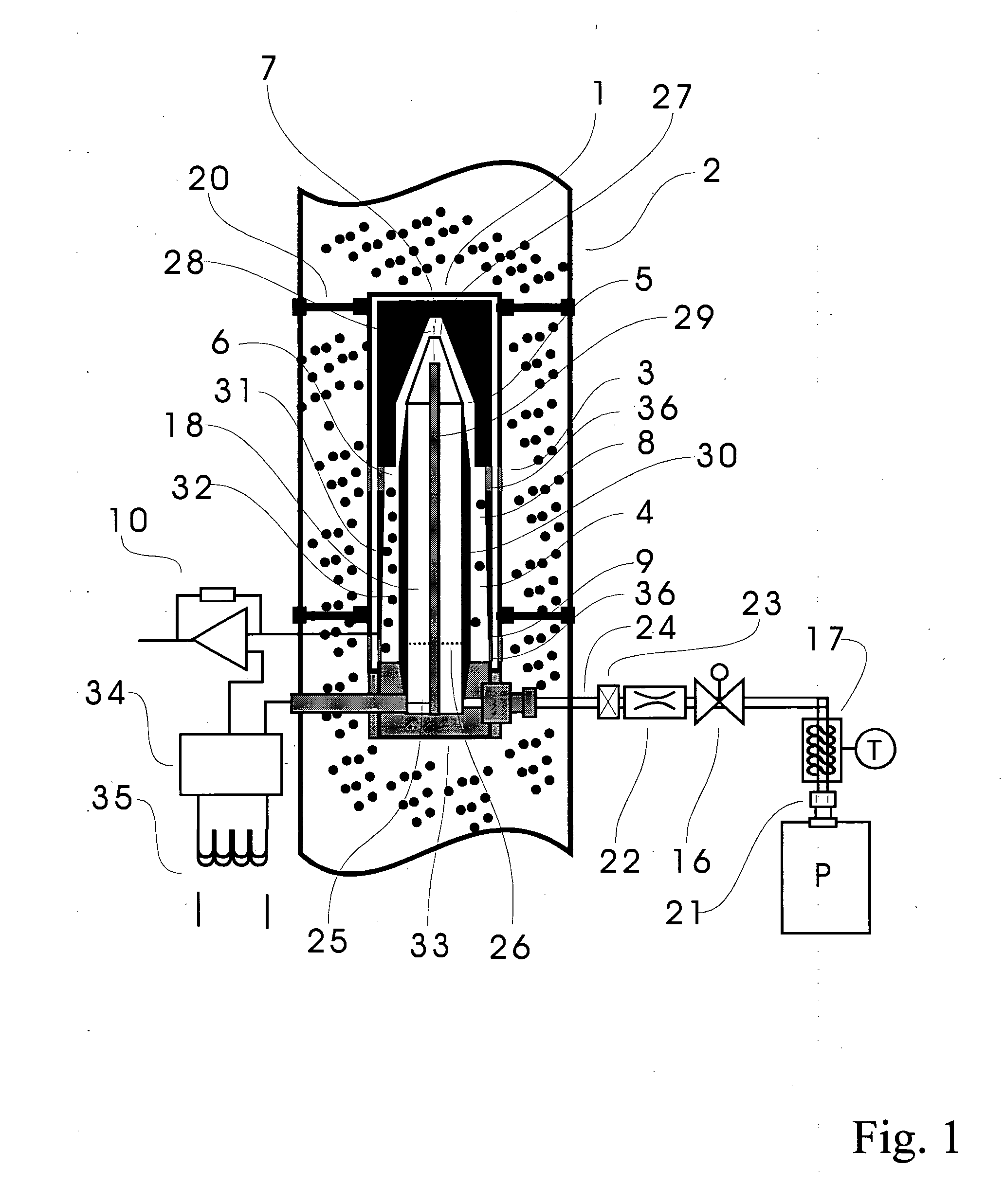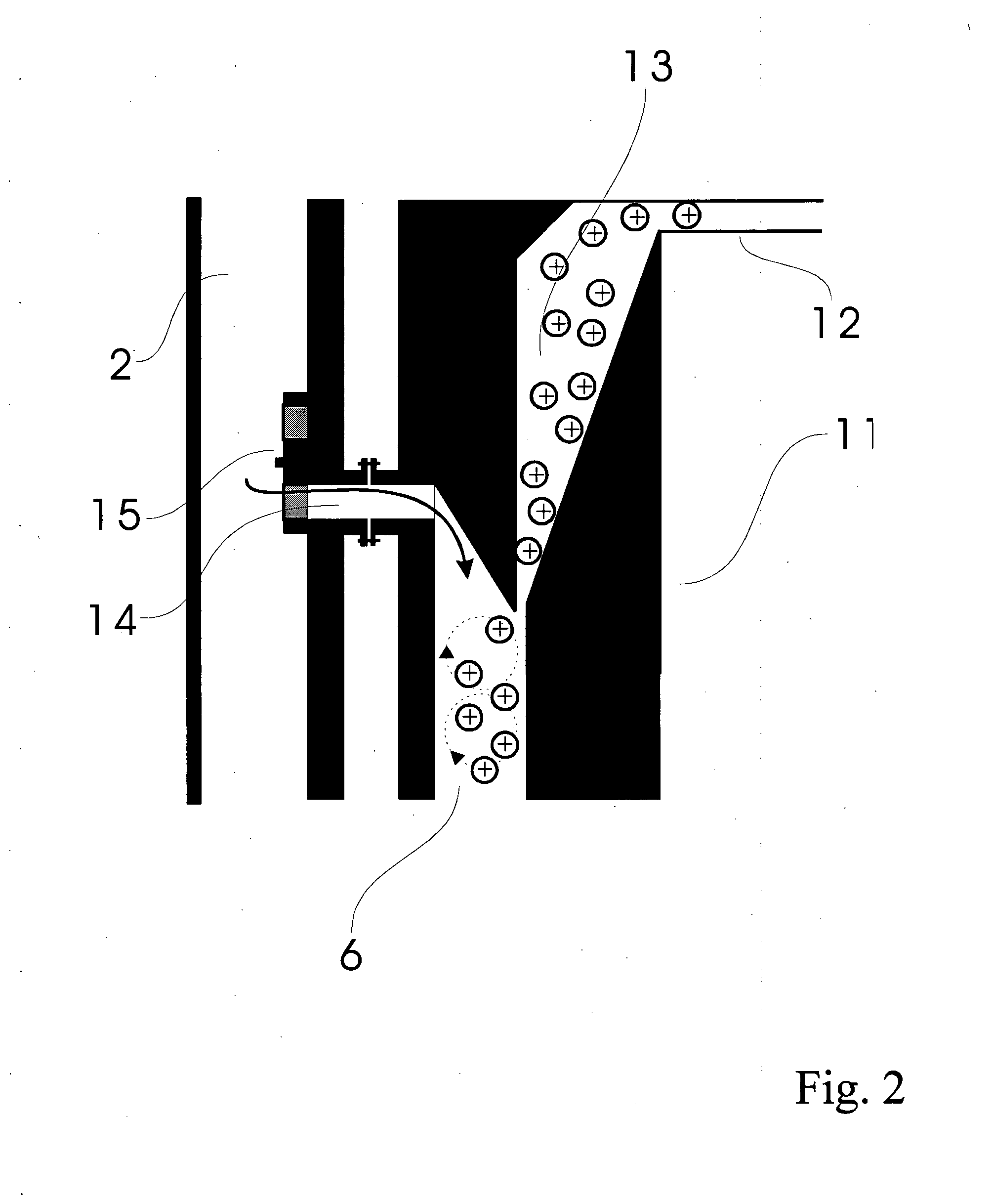Particle Measurement Process and Apparatus
a particle measurement and process technology, applied in the direction of instruments, material analysis, electrostatic separation, etc., can solve the problems of shortening the lifetime and reliability of the charger, affecting the efficiency of the measurement process, and affecting the accuracy of the measurement results, so as to reduce the loss of ion, and increase the ion production
- Summary
- Abstract
- Description
- Claims
- Application Information
AI Technical Summary
Benefits of technology
Problems solved by technology
Method used
Image
Examples
Embodiment Construction
[0038]FIG. 5 shows the invented process as separated to different functional blocks. The sample flow NV is sucked from the duct or channel where the particle-containing gas flows via an ejector E. Pressurized air flow PI forms the main flow and an ionizer IG is used to ionize the pressurized air flow. The ionizer IG is preferably based on corona discharging, and the necessary high voltage for the corona discharge is generated with the high voltage source HV electrically isolated with the transformer M. The ionized air flow is mixed with the sample flow and the particles of the sample flow are charged in the charging chamber VK. It is to be understood that the charging chamber is really a functional block and the charging preferably takes place in the ejector essentially at the point where the main flow and the side flow meet each other. The ions not attached to the particles are removed by the ion trap IL before the flow PV escapes from the measurement apparatus. The current escapin...
PUM
| Property | Measurement | Unit |
|---|---|---|
| diameter | aaaaa | aaaaa |
| particle diameter | aaaaa | aaaaa |
| diameters | aaaaa | aaaaa |
Abstract
Description
Claims
Application Information
 Login to View More
Login to View More - R&D
- Intellectual Property
- Life Sciences
- Materials
- Tech Scout
- Unparalleled Data Quality
- Higher Quality Content
- 60% Fewer Hallucinations
Browse by: Latest US Patents, China's latest patents, Technical Efficacy Thesaurus, Application Domain, Technology Topic, Popular Technical Reports.
© 2025 PatSnap. All rights reserved.Legal|Privacy policy|Modern Slavery Act Transparency Statement|Sitemap|About US| Contact US: help@patsnap.com



